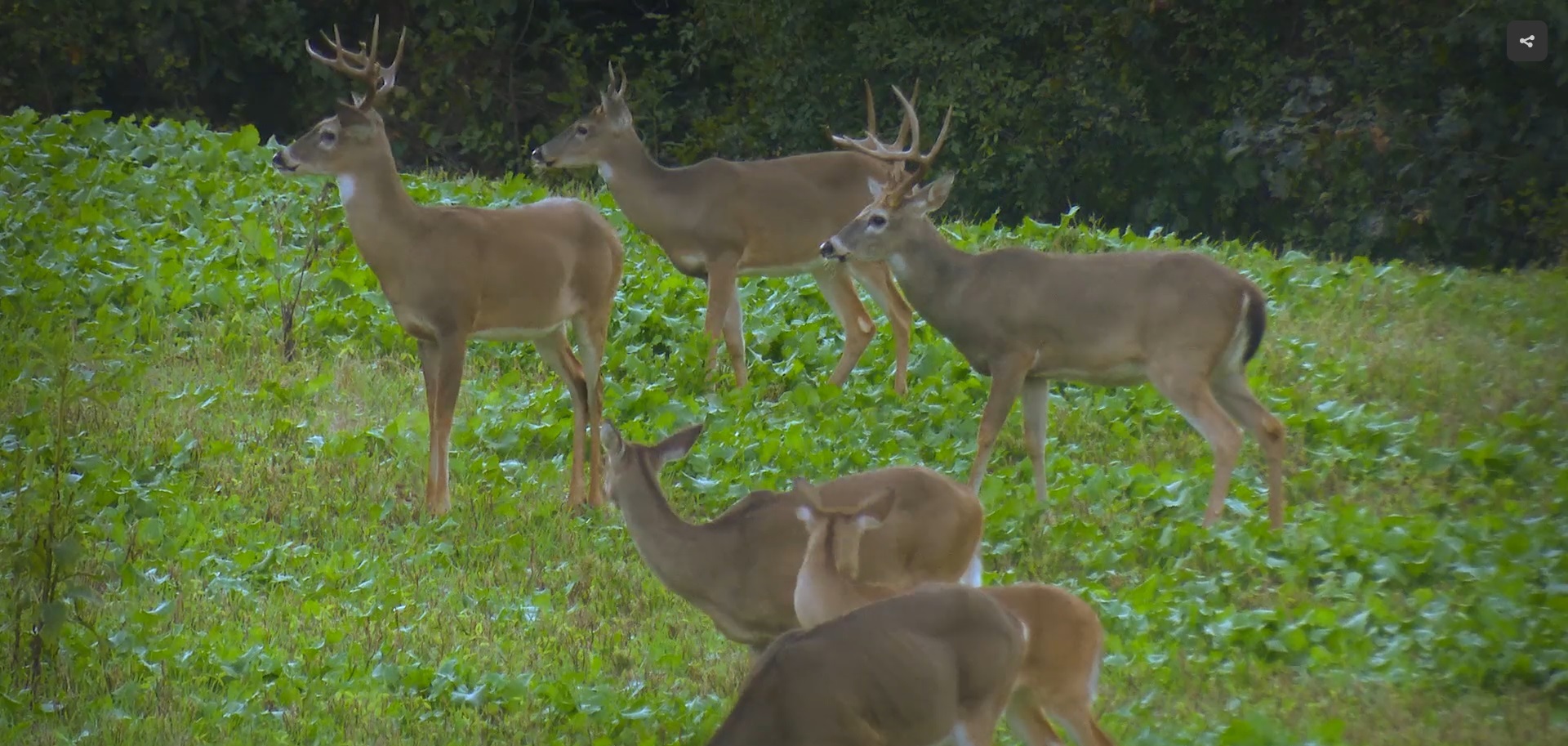A Big Question For Deer Hunters: How Many Bucks?
Filed under: Deer Management, Hunting Blog
The answer to this question has implications for deer hunters that they may or may not want to hear. Why? Because after a lengthy, scientific answer (see below) the bottom line is that to know how many bucks to harvest, hunters will need to spend more time in the woods hunting. Why? You can only know the answer to this question through repeated observations and analysis. Ultimately it may also mean more time in the stand using the best tool that deer hunters have at their disposal: the trigger finger. If you aren’t seeing mature bucks it is time to implement trigger finger deer management.
Deer hunters that want to have the best hunting possible on their hunting ground need to know that reducing stress on the local deer herd is one of the most important factors for better deer hunting and mature, huntable bucks. An equally important herd characteristic that should be managed is the adult sex ratio. The adult sex ratio is calculated very easily: it’s the number of bucks to does that are at least 1.5 years old. For example, if a herd has five bucks and ten does that were 1.5 years old or older, that herd’s adult sex ratio would be 1:2. I consider a buck to doe ratio of 1:1 to be the best for challenging, rewarding hunts. This is a “balanced” ratio for whitetails.

The balanced adult sex ratio has benefits throughout the life of a whitetail. Bucks will often attempt to tend a doe before she is receptive and remain near her for 24-48 hours. While he is tending that doe, other does may also be receptive. In fact, if the herd’s adult sex ratio is skewed heavily toward does, some does may cycle through their receptive period without being bred.
Those does that were not bred during the first cycle become receptive again about a month later. This means she will produce fawns a month later (or more if she cycles multiple times). Fawns that are born later will likely struggle as the conditions for fawning are probably not as favorable: as the summer progresses forage quality tends to decrease, insect loads become higher, the temperatures become higher, etc. Restated, the conditions for prospering as a fawn tend to decline as the summer progresses.
It is more difficult for deer to express their full potential at maturity if they didn’t have all the required resources as a fawn. In addition to providing good quality forage (nutrition) and cover, it is just as important to ensure the adult sex ratio is balanced so the majority of fawns will be born during the optimal time for growth and reduced stress.
The adult sex ratio impacts the herd’s health and huntability, especially for mature bucks. It is very stressful for mature bucks to participate in the rut. It is well documented that captive bucks in relatively small enclosures (less than five acres) with access to all the supplemental feeds they can consume often lose +/- 30% of their body weight during the rut. Given this, imagine the cost of participating in the rut for free-ranging wild bucks. These bucks must search for quality food, be constantly alert for two and four legged predators, and face all the daily challenges that captive deer avoid. In addition to the challenges of surviving, if a buck is part of herd where he is one of the “few” bucks around to breed the available does he will have to work that much harder and longer to breed the does when they are receptive. When the adult sex ratio strongly favors does, the duration (days, weeks or even months) that a buck will seek, chase, and tend does is greatly extended simply because some does will not be bred during their first receptive cycle.
That breeding stress is not limited to mature bucks. Yearling bucks that are not fully mature will seek, chase, and tend receptive does when mature bucks are occupied with other receptive does. The energy that these yearling bucks used for chasing does would be used for developing antlers and body weights. These young bucks would be dissuaded from breeding by the presence of mature bucks (and their pheromones). Immature bucks need a huge amount of resources simply to maintain skeletal and body growth. The resources expended by participating in the rut may well limit the resources available for skeletal and body growth.
The does are also affected by an unbalanced sex ratio. It takes resources for does to cycle through their receptive period multiple times and then nurture a fawn or fawns past the prime fawn rearing season.
Bucks, does, and fawns simply do best when they are born and rut during a natural timeframe and cycle. The best tool to ensure your herd is breeding and fawning at the optimal times is to manage the herd for a balanced adult sex ratio and ensure the population doesn’t exceed the habitat’s ability to supply quality forage.
In addition to a healthier herd, another huge benefit to managing for a balanced adult sex ratio is that that competition for breeding will likely be more intense. Bucks may be more active. Most likely hunting strategies such as calling, rattling, using decoys, etc. may be more effective than in herds where there is not as much competition during the rut.
A great tool to manage your land to yield mature, huntable bucks is to establish and maintain a herd with a balanced adult sex ratio. Trigger finger deer management is essential to balance the ratio. Does will most likely need to be harvested. Hunters seeking to balance the adult sex ratio on their hunting grounds will have a longer, more challenging hunting season. It also means more free range meat for the freezer or meat to share with friends and family!
Growing Deer together,
Grant



